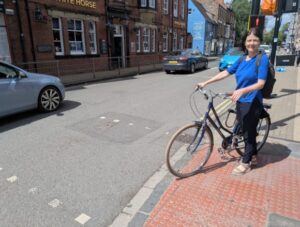Nitrogen oxide (NOx) pollution has improved by 6% in Brixton in the last 2-years, project reveals.
Across Brixton, 17 air quality boxes have been measuring a range of air pollutants, including nitrogen oxide (NO2), particulate matter (PM2.5) and ozone (O3)
The two-year project, which was conducted by Bosch, Transport for London (TfL) and Lambeth Council revealed a 6% reduction in nitrogen oxide (NOx) pollution. However, a lane closure had a negative impact on traffic flow and consequently that figure. A reduction of nearer 20% was the outcome prior to the lane closure.
The data that they collected was combined with TfL traffic count data which was used as inputs to emissions and dispersion modelling from Bosch.
This allowed TfL to control the traffic flow by adjusting traffic light timing. The Bosch air quality monitors then collected further data, which revealed the significant benefit of these traffic management measures.
Air quality lead for Bosch UK, Ian Larbey, said: ‘We have conclusively reduced emissions and improved traffic flow in Brixton and that’s a fantastic outcome.
‘With our highly accurate air quality monitoring and modelling coupled with key additional data points we ended up with a sophisticated model that enabled us to understand the best way to improve air quality. We’ve made a real difference in Brixton and we’re excited about the huge potential we have to improve the air quality in other areas of London but more widely in the UK and beyond.
The data also revealed that average vehicle speed increased from 8.7mph to 10.6mph. The traffic light signalling strategy will therefore continue to be used in Brixton to improve traffic flow and air quality.
Data and lessons learned from this trial will be used to inform TfL’s future traffic management interventions.
Rikesh Shah, head of commercial innovation at Transport for London (TfL) added: ‘We are proud of the work achieved in Brixton and through this new approach of co-innovating, with Bosch, the London Borough of Lambeth and HERE Technologies.
‘We applied an approach that put users front and centre and could be adapted to explore different innovative solutions to move further forward with the vital work to improve London’s air. Toxic air pollution in the capital is still the biggest environmental risk to the health of all Londoners and by using smart technologies such as those provided by Bosch we can help London breathe easier.’
Photo by muatajordanlangley

















Leave a Reply